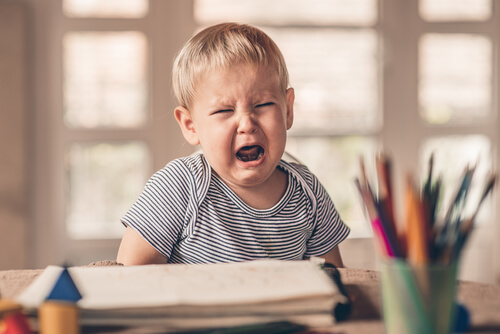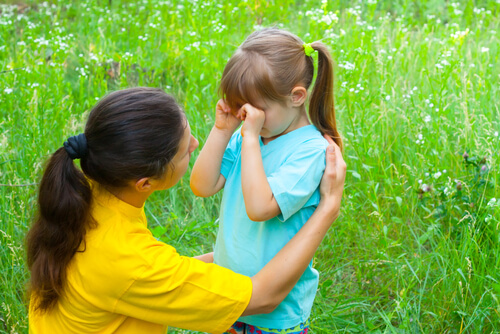How Can We Help Children Solve Problems

Children need to learn how to solve their problems themselves. In fact, resolving problems is one of the most important skills for the future of our children. So, if we help them with the task of improving, we will be doing them a great favor. Do not wait until they reach adolescence. A child should begin to confront their problems in preschool.
By interceding for our children and trying to solve most of their problems we are raising dependent, weak and irresponsible children. This overprotection is clearly evident in everyday tasks such as how to do homework or managing conflicts they have with their peers.
However, the problem is many parents do not know this process of problem solving very well. They resolve it as they can or know and that’s it, without really knowing the process they are using or cannot explicitly describe it. It’s not bad, it simply means that they have been assimilated to the process but do not know who to explain it.
Why children need to solve their own problems
Children face many problems every day. Problems ranging from academic difficulties, problems with peers, problems in their games and sports, difficulty completing a task or even trouble deciding what outfit is best suited for a particular occasion.
When a child solves a problem, incidentally they are improving their self-esteem and the confidence they have in themselves. Something that will undoubtedly make them more independent and confident.

On the other hand, when a child does not have the skills to solve a problem and somehow feels inferior to it, he puts a process of avoidance into place. For example, if a child is being teased by his peers and is not sure how to answer, instead of facing the situation, he will say he does not like school, will study less or complain of health problems to avoid exposing himself to the situation.
Other children who lack problem-solving skills will react impulsively, without thinking, by doing something someone tells them not to do or through violence.
Helping children learn seek and find the best options does not mean doing the process for them, but accompanying them through it.
How to teach children to assess their problems
Children have to start by identifying that they have a problem. Sometimes they are not aware of it or have not dared to verbalize it. The child has to recognize that they have a problem. As Ludwig Wittgenstein said, if a problem can arise, it can also be solved. He was probably talking about matters of transcendental philosophy, but the approach is equally true for the problems of everyday life.
Once children identify the problem, they can begin to generate solutions before opting for one. One way they love to do this, and that adults use also, is by brainstorming. This consists of saying or writing down all the solutions we can think of, as crazy they may seem. This way of thinking is fantastic, since it is precisely those crazy ideas that, later through a process of reflection, can give us a really good solution.

Once a child recognizes that they have several options and the possible consequences of each, it’s time to decide which option is best. Here we must teach children that if they choose an action, and this does not solve the problem, they can always try something else. In this sense, we should encourage them to keep trying to solve a problem until it is resolved.
Discuss problems actively
When problems appear, unless it’s a really dangerous situation, we do not have to rush to solve them. If you see that your child is struggling to overcome a difficulty, let them do it even if it is infinitely more difficult for them than it is for you. Value the fact that they are putting enthusiasm and courage into something that they may or may not succeed in.
Only when you see that they really do not know what’s happening or they don’t know what to do or have not chosen the right path can you give them a hand. But not to solve the problem; rather, to help them recognize it and focus on it to look for options.
We should also avoid punishing or scolding a child when he or she is unable to resolve a conflict or when they show signs of having a problem. If they often argue with their siblings or get bad grades, for example, help them think about the problem and find solutions; not feed the source of conflicts or difficulties.
Allow the child to experience the natural consequences of their decisions
When children are allowed to experience the natural consequences of their decisions they really learn problem-solving skills. This means allowing the child to make a choice and then face the consequences that they yield whether they are positive or negative.

When a child or adolescent is experiencing the consequences of a decision they’ve made freely, you can take advantage of discussing what happened, why it happened and what other options there were.
However, if we do not let our children begin to move into the real world they will not learn to make good decisions, they will look down on any risk because they have the feeling that they are completely incapable. So, do not forget that they will only learn to make decisions if we let them experience the whole process, from defining the problem to coping with the consequences of their actions.
5 Things Mentally Strong Parents Do
Being mentally strong parents involves knowing how to regulate emotions and manage thoughts, even it seems that your kids want to drive you crazy. See more
This text is provided for informational purposes only and does not replace consultation with a professional. If in doubt, consult your specialist.








